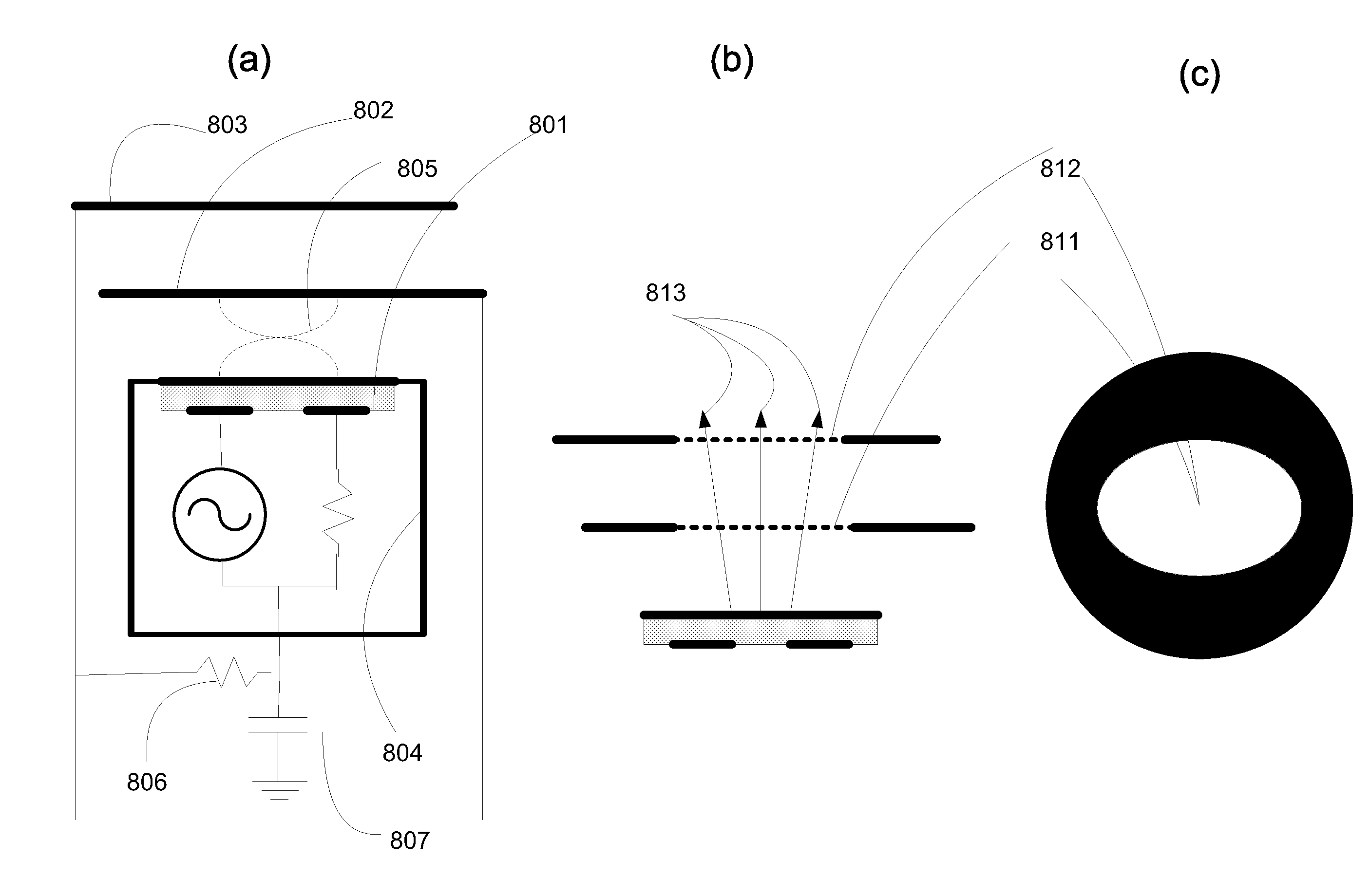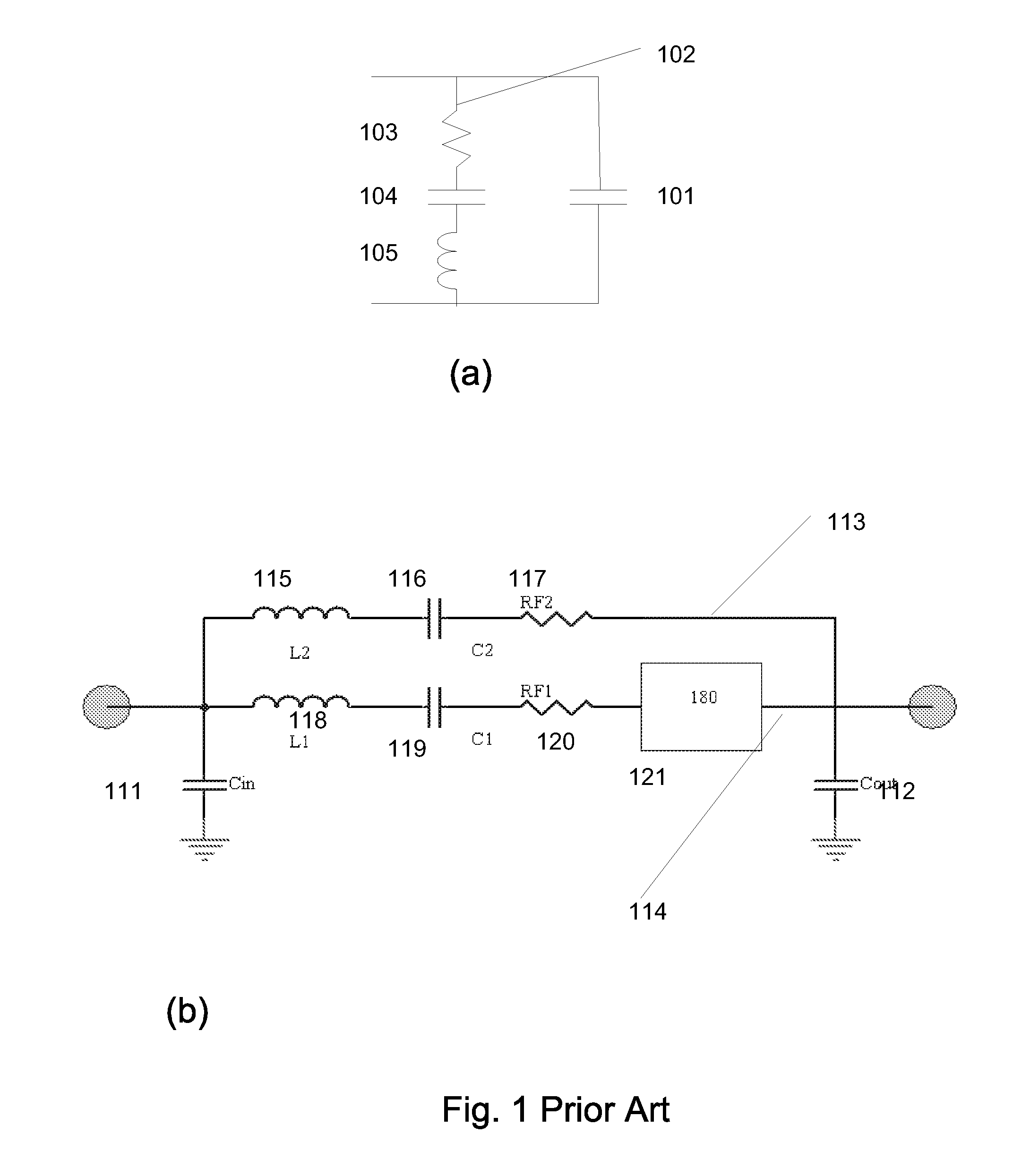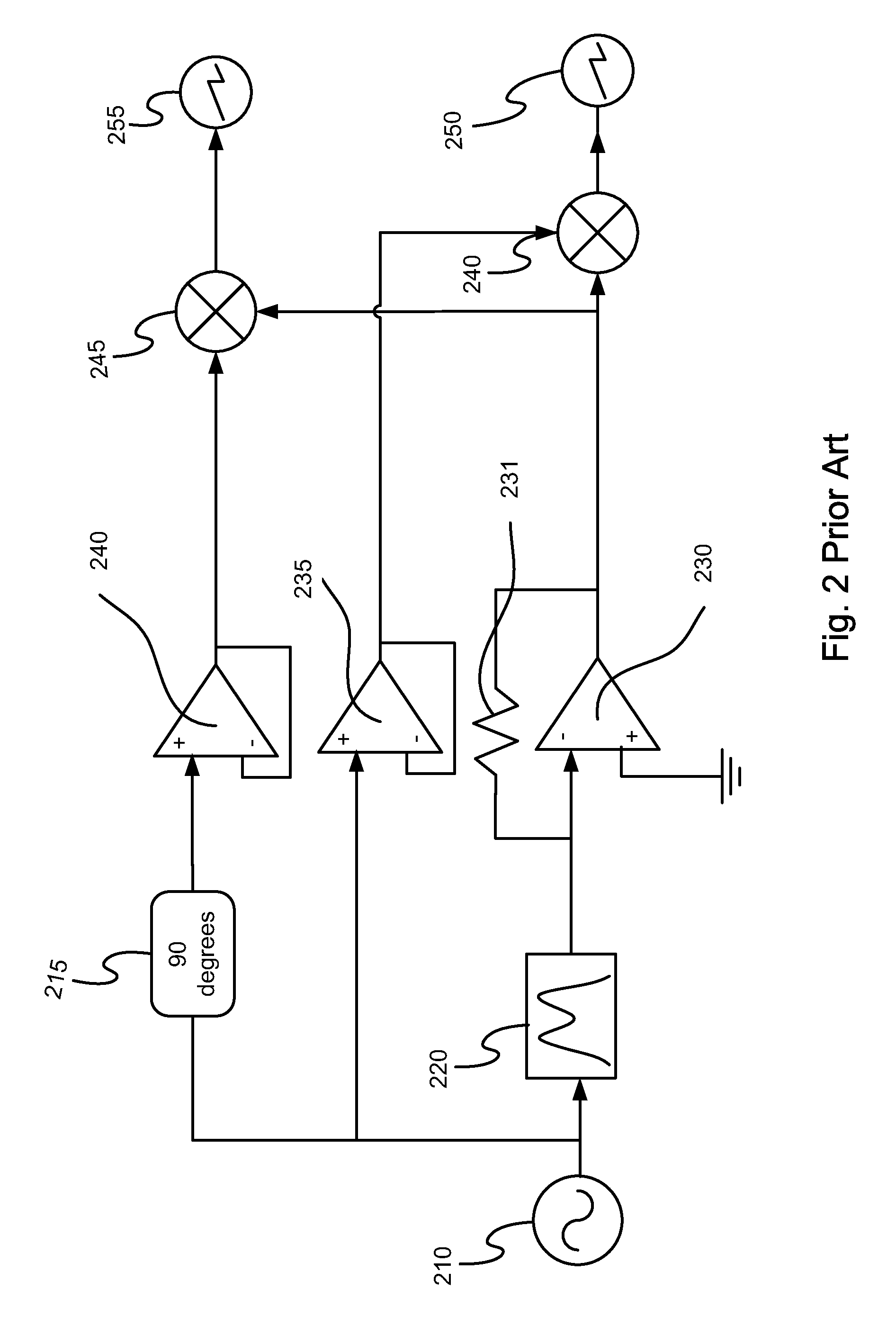Controlled compressional wave components of thickness shear mode multi-measurand sensors
a compressional wave and sensor technology, applied in the direction of liquid/fluent solid measurement, instruments, machines/engines, etc., can solve the problems of spurious modes, unwanted devices designed to be ‘single mode’ devices, and inability to simultaneously detect all fluid properties, so as to achieve anti-reflective effect, and altering response of said awd
- Summary
- Abstract
- Description
- Claims
- Application Information
AI Technical Summary
Benefits of technology
Problems solved by technology
Method used
Image
Examples
embodiments
[0161]Embodiments demonstrate the integration of conductivity and dielectric electrodes into a viscometer using thickness shear mode coupled resonators. The approaches are generally applicable to any TSM resonator sensor including single pole resonators, multimode resonators, and the like with either thickness field or lateral field excitation. The approach is applicable to linearly polarized resonators as well as planar torsional sensors and the like, as in J. Andle, R. Haskell, M. Chap, and D. Stevens, “Improved Substrate Selection for Lateral Field TSM Sensors”, 2009 IEEE UFFC (unpublished). The well known issues of compressional mode generation are mitigated, and even used to advantage.
[0162]It would be further desired to know the compressional elastic modulus in order to better know density and better correct for errors due to compressional wave radiation. In hydraulic systems, compressibility is of direct interest. Martin, S. J. Martin, G. C. Frye, R. W. Cernosek and S. D. Sen...
PUM
| Property | Measurement | Unit |
|---|---|---|
| thickness | aaaaa | aaaaa |
| width | aaaaa | aaaaa |
| length | aaaaa | aaaaa |
Abstract
Description
Claims
Application Information
 Login to View More
Login to View More - R&D
- Intellectual Property
- Life Sciences
- Materials
- Tech Scout
- Unparalleled Data Quality
- Higher Quality Content
- 60% Fewer Hallucinations
Browse by: Latest US Patents, China's latest patents, Technical Efficacy Thesaurus, Application Domain, Technology Topic, Popular Technical Reports.
© 2025 PatSnap. All rights reserved.Legal|Privacy policy|Modern Slavery Act Transparency Statement|Sitemap|About US| Contact US: help@patsnap.com



